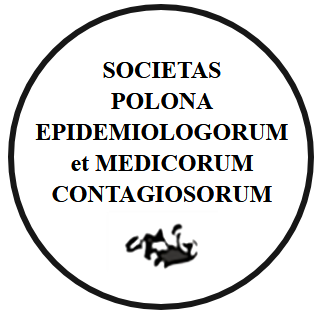ABSTRACT
Communicable diseases have accompanied humanity since the beginning of its existence. The first descriptions of diseases appeared in the 8th century B.C. in the Iliad, Homer. Epidemics of communicable diseases were often described in social context by poets, historians, and chroniclers. Medicine as a science until the 19th century could not provide answers concerning the aetiology of epidemic diseases or propose therapies with measurable benefits.
For centuries the fight against epidemics was the duty of administrative services. Quarantine, isolation (including forced isolation), sanitary cordons, and disinfection procedures involving the moxibustion, burning of objects, clothing and bodies, etc. were introduced very early on. The knowledge of practical measures taken during repeated epidemics of various communicable diseases in Europe laid the foundations for the development of social medicine in the 18th century. In the 19th century, methods such as statistics, comparison of patient groups, mathematics and others were introduced to assess the effectiveness of prophylactic and therapeutic measures. In the 19th century it became possible to distinguish a new science – epidemiology. The missing element was the so-called “bacteriological breakthrough”. After the discovery and description of bacteria, there was a tumultuous development of bacteriology, vaccines were created and huge financial resources were allocated to bacteriological institutes. After extensive use of chemotherapeutics and antibiotics, it turned out in the mid-20th century that the mortality from communicable diseasesis statistically lower in some countries than in others.In the 1940s, population-based cardiological studies using epidemiological patterns were introduced in the United States, and in the 1950s epidemiological congresses worldwide accepted that it was reasonable for epidemiology to investigate the occurrence and causes of communicable and non-communicable diseases. In Poland, in 1964, at the 4th Congress of the Polish Society of Epidemiologists and Doctors of Infectious Diseases in Cracow, a decision was made to extend epidemiological studies to non-communicable diseases.
STRESZCZENIE
Choroby zakaźne towarzyszą ludzkości od początków jej istnienia. Opisy chorób pojawiły się już w Iliadzie, Homera (VIII w.p.n.e). Epidemie chorób zakaźnych były często opisywane w kontekście społecznym przez poetów, historyków, kronikarzy. Medycyna jako nauka do XIX wieku nie mogła dać odpowiedzi dotyczących etiologii chorób występujących epidemicznie ani zaproponować terapii przynoszących wymierne korzyści.
Przez stulecia walka z epidemiami była obowiązkiem służb administracyjnych. Bardzo wcześnie wprowadzono kwarantannę, izolację, kordony sanitarne, oraz postępowanie mające na celu dezynfekcję- okadzanie, palenie przedmiotów ubrań i ciał itp. Wiedza płynąca z praktycznych działań podczas powtarzających się epidemii różnych chorób zakaźnych w Europie dała podwaliny pod rozwój medycyny społecznej w XVIII wieku. W XIX wieku zaczęto wykorzystywać do oceny skuteczności działań profilaktyczno leczniczych metody tj. statystyka, porównanie grup pacjentów, matematykę i inne. W XIX wieku stało się możliwe wyodrębnienie nowej nauki- epidemiologii. Brakującym elementem był tzw. ,,przełom bakteriologiczny”. Po odkryciu i opisaniu bakterii nastąpił burzliwy rozwój bakteriologii, powstawały szczepionki, na instytuty bakteriologiczne przeznaczano olbrzymie środki finansowe. Po szerokim zastosowaniu chemioterapeutyków i antybiotyków okazało się w połowie XX wieku, że śmiertelność z powodu chorób zakaźnych jest w niektórych krajach statystycznie mniejsza niż z innych przyczyn. W latach 40-tych XX wieku wprowadzono w USA populacyjne badania kardiologiczne oparte na schematach epidemiologicznych, a w latach pięćdziesiątych przyjęto podczas światowych kongresów epidemiologicznych iż uzasadnione jest, by epidemiologia zajmowała się badaniem występowania i przyczyn chorób zakaźnych i niezakaźnych. W Polsce w 1964 roku na IV Zjeździe Polskiego Towarzystwa Epidemiologów i Lekarzy Chorób Zakaźnych w Krakowie podjęto decyzję o rozszerzeniu badań naukowych epidemiologicznych na choroby niezakaźne.
You can change cookies settings in your browser. Restricted use of cookies in the browser configuration may affect some functionalities of the website.





